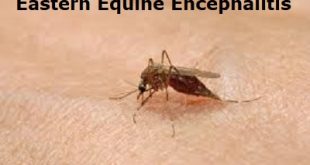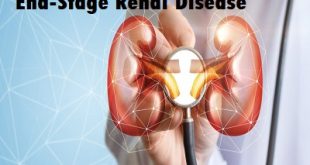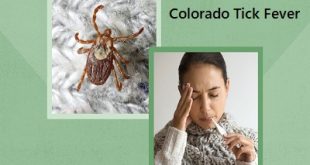Description
Enterovirus (EN-tuh-ro-vy-rus) is a term for viruses that live in the human digestive tract and cause a range of different symptoms, from mild to serious. Most cases do not cause serious harm and go away in just a few days.
There are many kinds of enteroviruses, including coxsackieviruses, echoviruses, polioviruses, the hepatitis A virus, and others, such as enterovirus D68. These viruses are common and infect millions of Americans every year. They can infect anyone, but are more likely to cause illnesses in infants, children, and teens who haven’t developed immunity against the virus yet (from not being previously exposed to it), and people with weakened immune systems.
Pathophysiology
Enteroviruses are transmitted predominantly via the fecal-oral route. However, there are some exceptions, including coxsackievirus A21, which is spread mainly by respiratory secretions,and enterovirus 70, which is shed in tears and spread via fingers and fomites.
Upon entry into the oropharynx, the virus replicates in submucosal tissues of the distal pharynx and alimentary tract. Viral particles are shed in the feces and in upper respiratory tract secretions for days prior to symptom onset. The average incubation period is 3-10 days, during which the virus migrates to regional lymphoid tissue and replicates. Minor viremia results, which is associated with the onset of symptoms and viral spread to the reticuloendothelial system (spleen, liver, bone marrow).
Dissemination to target organs follows, and viral replication in target organs produces the major viremia with possible secondary seeding of the CNS. Potential target organs include the skin and CNS.
What causes an enterovirus infection in a child?
Enteroviruses can be spread when an infected person sneezes or coughs droplets into the air or on surfaces. A child may then breathe in droplets, or touch a contaminated surface and touch his or her eyes, mouth, or nose. Some of the viruses can spread through contact with infected feces (stool). This can happen when children don’t wash their hands or don’t wash them properly. It can also happen from eating or drinking food or water that contains the virus.
Signs and Symptoms of Non-Polio Enteroviruses
Often, people infected with non-polio enteroviruses have no symptoms, or they have only mild illness, like the common cold. Common signs of mild illness may include:
- Fever
- Runny nose
- Sneezing
- Cough
- Skin rash
- Sore throat
- Mouth blisters
- Body and muscle aches
Complications of enterovirus
- Viral conjunctivitis
- Hand, foot, and mouth disease
- Viral meningitis (infection of the covering of the spinal cord and/or brain)
- Viral encephalitis (infection of the brain)
- Myocarditis (infection of the heart)
- Pericarditis (infection of the sac around the heart)
- Acute flaccid paralysis (a sudden onset of weakness in one or more arms or legs)
- Inflammatory muscle disease (slow, progressive muscle weakness)
Infants and people with weakened immune systems are at greater risk of having these more serious complications.
How is an enterovirus infection diagnosed in a child?
A healthcare provider will ask about your child’s symptoms and health history. The provider will do a physical exam. This may include an exam of the mouth, eyes, and skin. The healthcare provider will listen to your child’s chest as he or she breathes.
In the case of severe symptoms, your child may need certain tests. These are done to see if your child has an enterovirus, or has a different kind of illness. The tests can look for problems in the heart, lungs, and brain. The tests may include:
- Virus culture. The healthcare provider takes a small sample of saliva, blood, urine, or stool. It is then tested for a virus.
- Polymerase chain reaction (PCR). The healthcare provider takes a small sample of blood, urine, or saliva. The sample is tested for a virus.
- Spinal fluid test. The healthcare provider takes a small sample of spinal fluid. This is done by putting a small needle into your child’s back. The fluid is tested for levels of certain chemicals and cells.
- Blood test. The healthcare provider takes blood from a vein. It is then tested for chemicals that may show the cause of your child’s illness, or show organ problems.
- X-rays. This test is done to look at the lungs and heart.
- Electrocardiogram (ECG). This test is done to look at the electrical action of the heart.
- Echocardiogram. This test uses sound waves and a computer to look at the structure and movements of the heart.
Enterovirus treatment
Enterovirus treatment depends on the type of enterovirus infection and symptoms you have.
Poliomyelitis
Polio management is supportive in nature, as follows:
- Abortive polio: Treatment with bed rest and minimal exertion may be done at home. Supportive treatment with analgesics and sedatives may be used.
- Nonparalytic polio: Management is similar to that of abortive polio. Combine analgesic therapy with hot packs for pain relief.
- Paralytic polio: In contrast to abortive and nonparalytic polio, which can be managed at home, patients with paralytic polio require hospitalization.
- Bed rest is required during the early stages of the disease because exertion may worsen the paralysis.
- Applying hot packs to affected muscles may alleviate pain.
- Align the body in a neutral position to minimize deformity. Patients should start physical therapy soon after the resolution of pain. Physical therapy should include both active and passive exercises.
- Mechanical ventilation may be required if respiratory muscles are affected.
- Postural drainage and suction should be implemented in mild bulbar polio.
- Patients with weakness or paralysis of the bladder may be treated with cholinergic agents, the sound of running water, or catheterization.
Pleurodynia
- Treatment is symptomatic, using analgesics and heat application for pain relief. Severe pain may require opiate analgesics.
Aseptic meningitis
- Treatment is symptomatic, with analgesics for headache relief. Headache is often severe and prolonged in adults; potent analgesics should be administered, when necessary.
Myopericarditis
Treatment is mainly supportive in nature and involves management of pericardial pain, pericardial effusion, arrhythmias, and heart failure.
Bed rest is important since exercise can increase the degree of myocardial necrosis.
Intravenous immunoglobulin (IVIG) therapy has shown some benefit in small case-control studies. Nevertheless, most reports lack statistical significance, and randomized trials are needed 67).
Capsid-binding inhibitors belong to a class of drugs that have shown benefit in some immunosuppressed patients with myocarditis. However, these drugs are not available for use in the United States 68).
Corticosteroids yield little or no benefit, and immunosuppressive therapy is contraindicated during the acute phase of viral myocarditis because they have been shown to cause clinical deterioration 69).
Cardiac transplantation may be required in severe cases of dilated cardiomyopathy due to enteroviral infection.
Acute hemorrhagic conjunctivitis
Treatment is primarily symptomatic in nature.
Antimicrobial agents are not indicated unless bacterial superinfection occurs. Corticosteroids are contraindicated.
Cold compresses may be used, along with antihistamine/decongestant eye drops.
Herpangina and hand-foot-and-mouth disease
Symptomatic treatment for sore throat is the mainstay of treatment, including analgesics, topical anesthetics, mouth wash, and saline rinses.
Viscous lidocaine (2% solution) may be helpful.
How to prevent the Enterovirus from spreading
There is no vaccine to prevent EV-D68 infection. But you can take steps to prevent spreading the virus.
- Wash your hands often with soap. Teach your children to do the same.
- Do not put unwashed hands around your eyes, mouth, or nose.
- Do not share cups or eating utensils with someone who is sick.
- Avoid close contact such as shaking hands, kissing, and hugging people who are sick.
- Cover coughs and sneezes with your sleeve or a tissue.
- Clean touched surfaces such as toys or doorknobs often.
- Stay home when you are sick and keep your children home if they are sick.
 Diseases Treatments Dictionary This is complete solution to read all diseases treatments Which covers Prevention, Causes, Symptoms, Medical Terms, Drugs, Prescription, Natural Remedies with cures and Treatments. Most of the common diseases were listed in names, split with categories.
Diseases Treatments Dictionary This is complete solution to read all diseases treatments Which covers Prevention, Causes, Symptoms, Medical Terms, Drugs, Prescription, Natural Remedies with cures and Treatments. Most of the common diseases were listed in names, split with categories.







